13 Reasons To Have An Out-of-This-World Friday (the 13th)
13 Reasons to Have an Out-of-This-World Friday (the 13th)
1. Not all of humanity is bound to the ground

Since 2000, the International Space Station has been continuously occupied by humans. There, crew members live and work while conducting important research that benefits life on Earth and will even help us eventually travel to deep space destinations, like Mars.
2. We’re working to develop quieter supersonic aircraft that would allow you to travel from New York to Los Angeles in 2 hours

We are working hard to make flight greener, safer and quieter – all while developing aircraft that travel faster, and building an aviation system that operates more efficiently. Seventy years after Chuck Yeager broke the sound barrier in the Bell X-1 aircraft, we’re continuing that supersonic X-plane legacy by working to create a quieter supersonic jet with an aim toward passenger flight.
3. The spacecraft, rockets and systems developed to send astronauts to low-Earth orbit as part of our Commercial Crew Program is also helping us get to Mars
Changes to the human body during long-duration spaceflight are significant challenges to solve ahead of a mission to Mars and back. The space station allows us to perform long duration missions without leaving Earth’s orbit.

Although they are orbiting Earth, space station astronauts spend months at a time in near-zero gravity, which allows scientists to study several physiological changes and test potential solutions. The more time they spend in space, the more helpful the station crew members can be to those on Earth assembling the plans to go to Mars.
4. We’re launching a spacecraft in 2018 that will go “touch the Sun”

In the summer of 2018, we’re launching Parker Solar Probe, a spacecraft that will get closer to the Sun than any other in human history. Parker Solar Probe will fly directly through the Sun’s atmosphere, called the corona. Getting better measurements of this region is key to understanding our Sun.
For instance, the Sun releases a constant outflow of solar material, called the solar wind. We think the corona is where this solar wind is accelerated out into the solar system, and Parker Solar Probe’s measurements should help us pinpoint how that happens.
5. You can digitally fly along with spacecraft…that are actually in space…in real-time!

NASA’s Eyes are immersive, 3D simulations of real events, spacecraft locations and trajectories. Through this interactive app, you can experience Earth and our solar system, the universe and the spacecraft exploring them. Want to watch as our Juno spacecraft makes its next orbit around Juno? You can! Or relive all of the Voyager mission highlights in real-time? You can do that too! Download the free app HERE to start exploring.
6. When you feel far away from home, you can think of the New Horizons spacecraft as it heads toward the Kuiper Belt, and the Voyager spacecraft are beyond the influence of our sun…billions of miles away

Our New Horizons spacecraft completed its Pluto flyby in July 2015 and has continued on its way toward the Kuiper Belt. The spacecraft continues to send back important data as it travels toward deeper space at more than 32,000 miles per hour, and is ~3.2 billion miles from Earth.

In addition to New Horizons, our twin Voyager 1 and 2 spacecraft are exploring where nothing from Earth has flown before. Continuing on their more-than-37-year journey since their 1977 launches, they are each much farther away from Earth and the sun than Pluto. In August 2012, Voyager 1 made the historic entry into interstellar space, the region between the stars, filled with material ejected by the death of nearby stars millions of years ago.
7. There are humans brave enough to not only travel in space, but venture outside space station to perform important repairs and updates during spacewalks

Just this month (October 2017) we’ve already had two spacewalks on the International Space Station…with another scheduled on Oct. 20.
Spacewalks are important events where crew members repair, maintain and upgrade parts of the International Space Station. These activities can also be referred to as EVAs – Extravehicular Activities. Not only do spacewalks require an enormous amount of work to prepare for, but they are physically demanding on the astronauts. They are working in the vacuum of space in only their spacewalking suit.
8. Smart people are up all night working in control rooms all over NASA to ensure that data keeps flowing from our satellites and spacecraft

Our satellites and spacecraft help scientists study Earth and space. Missions looking toward Earth provide information about clouds, oceans, land and ice. They also measure gases in the atmosphere, such as ozone and carbon dioxide and the amount of energy that Earth absorbs and emits. And satellites monitor wildfires, volcanoes and their smoke.
9. A lot of NASA-developed tech has been transferred for use to the public
Our Technology Transfer Program highlights technologies that were originally designed for our mission needs, but have since been introduced to the public market. HERE are a few spinoff technologies that you might not know about.
10. We have a spacecraft currently traveling to an asteroid to collect a sample and bring it back to Earth

OSIRIS-REx is our first-ever mission that will travel to an asteroid and bring a sample of it back to Earth. Currently, the spacecraft is on its way to asteroid Bennu where it will survey and map the object before it “high-fives” the asteroid with its robotic arm to collect a sample, which it will send to Earth.
If everything goes according to plan, on Sept. 24, 2023, the capsule containing the asteroid sample will make a soft landing in the Utah desert.
11. There are Earth-sized planets outside our solar system that may be habitable
To date, we have confirmed 3,000+ exoplanets, which are planets outside our solar system that orbit a Sun-like star. Of these 3,000, some are in the habitable zone – where the temperature is just right for liquid water to exist on the surface.

Recently, our Spitzer Space Telescope revealed the first known system of SEVEN Earth-size planets around a single star. Three of these plants are firmly in the habitable zone, and could have liquid water on the surface, which is key to life as we know it.
12. Earth looks like art from space

In 1960, the United States put its first Earth-observing environmental satellite into orbit around the planet. Over the decades, these satellites have provided invaluable information, and the vantage point of space has provided new perspectives on Earth.

The beauty of Earth is clear, and the artistry ranges from the surreal to the sublime.
13. We’re building a telescope that will be able to see the first stars ever formed in the universe

Wouldn’t it be neat to see a period of the universe’s history that we’ve never seen before? That’s exactly what the James Webb Space Telescope (JWST) will be able to do…plus more!
Specifically, Webb will see the first objects that formed as the universe cooled down after the Big Bang. We don’t know exactly when the universe made the first stars and galaxies – or how for that matter. That is what we are building Webb to help answer.
Happy Friday the 13th! We hope it’s out-of-this-world!
Make sure to follow us on Tumblr for your regular dose of space: http://nasa.tumblr.com.
More Posts from Ritasakano and Others
Modesto Carvalhosa on Twitter
As imagens de Júpiter deixa-nos atordoado.

The cloudscape of Jupiter, observed by NASA’s Voyager 1 probe on February 3, 1979.
(Planetary Society)
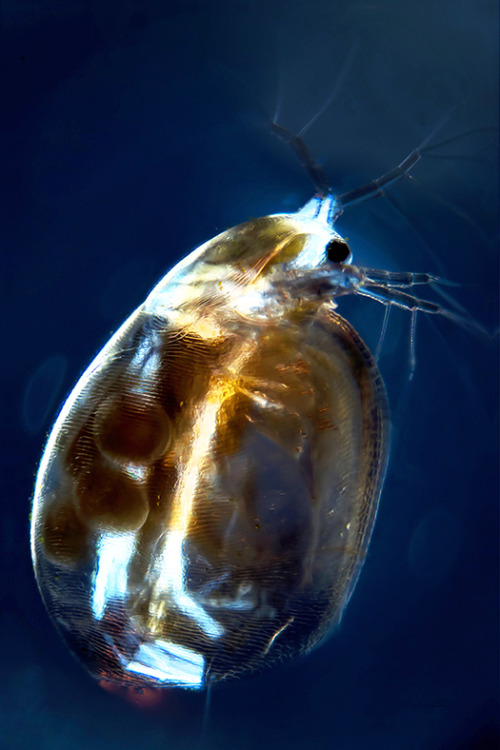
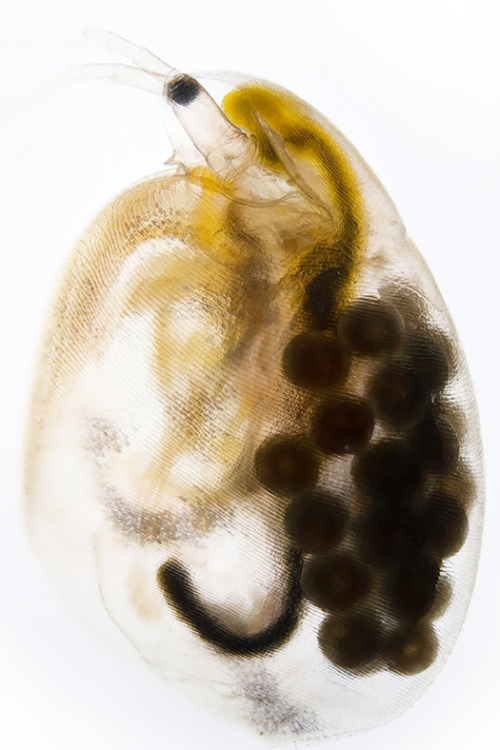
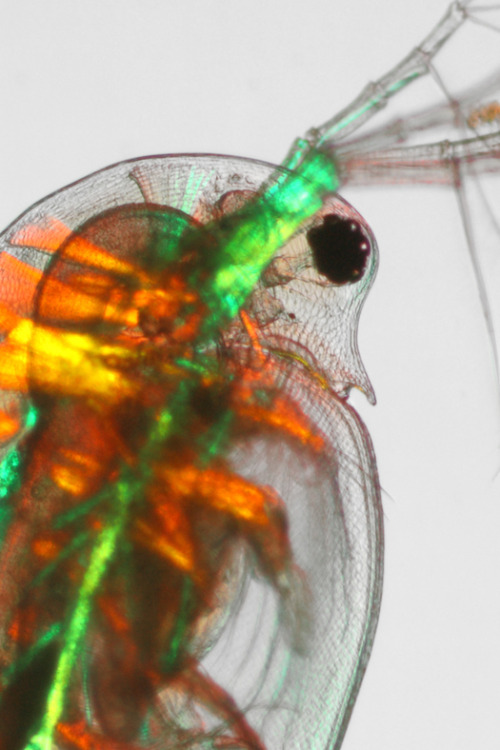
A salty situation.
Zooplankton may be the smallest species in the freshwater food chain, but they play a big role in preserving our lakes, streams and wetlands. That’s one of the reasons why IBM joined forces with the Rensselaer Polytechnic Institute and The FUND for Lake George to create the Jefferson Project at Lake George to understand and protect freshwater ecosystems. Recently they studied the effects road salt has on a species of zooplankton. Road salt usage has increased 50-fold since 1940, and bodies of freshwater are increasing in salinity because of it. Using IBM technology, the researchers monitored zooplankton in varying levels of salinity and found that the organisms were capable of evolving a higher tolerance to the salt. This is good news for the ecosystem since the loss of plankton could have cascading effects throughout the food chain. See, small can be mighty too.
Explore the study’s results →
Muito bom!!
Celebrate Today’s Solar Eclipse With NASA
Today, Aug. 21, the Moon’s shadow is sweeping across North America. People across the continent have the chance to see a partial solar eclipse if skies are clear.

For those within the narrow path of totality, stretching from Oregon to South Carolina, that partial eclipse will become total for a few brief moments.

Make sure you’re using proper solar filters (not sunglasses) or an indirect viewing method if you plan to watch the eclipse in person.

Wherever you are, you can also watch today’s eclipse online with us at nasa.gov/eclipselive. Starting at noon ET, our show will feature views from our research aircraft, high-altitude balloons, satellites and specially-modified telescopes, as well as live reports from cities across the country and the International Space Station.
Learn all about today’s eclipse at eclipse2017.nasa.gov.
Make sure to follow us on Tumblr for your regular dose of space: http://nasa.tumblr.com
Sonhar Com mundos distantes Possibilidades Eternas.
Solar System: Top 5 Things to Know This Week
1. A Ceres of Fortunate Events

Our Dawn mission continues its exploration at Ceres, and the team is working with the data coming back to Earth, looking for explanations for the tiny world’s strange features. Follow Dawn’s expedition HERE.
2. Icy Moon Rendezvous
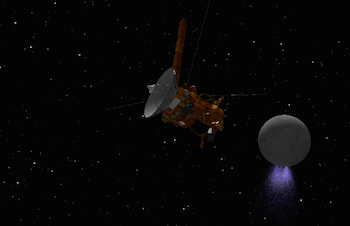
One of the most interesting places in the entire solar system is Saturn’s moon Enceladus, with its underground ocean and spectacular geyser plume. This month, the Cassini spacecraft will be buzzing close by Enceladus several times, the last such encounters of the mission. On October 14, Cassini will perform a targeted flyby at a distance of just 1,142 miles (1,838 kilometers) over the moon’s northern latitudes. Ride along with Cassini HERE.
3. Make Your Own Mars Walkabout
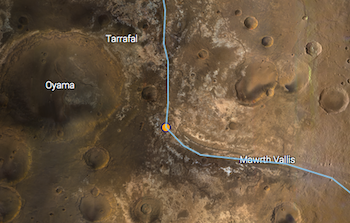
You can retrace Opportunity’s journey, see where the Curiosity rover is now, or even follow along with fictional astronaut Mark Watney from The Martian movie using the free online app MarsTrek. The app lets you zoom in on almost any part of the planet and see images obtained by our spacecraft, so you can plan your on Red Planet excursion. Take a hike HERE.
4. Elusive Features on Jupiter

New imagery from our Hubble Space Telescope is capturing details never before seen on Jupiter. High-resolution maps and spinning globes, rendered in the 4K Ultra HD format, reveal an elusive wave and changes to Jupiter’s Great Red Spot. Explore Jupiter HERE.
5. Mr. Blue Sky

Another week, another amazing picture from Pluto. The first color images of Pluto’s atmospheric hazes, returned by our New Horizons spacecraft last week, reveal that the hazes are blue. Who would have expected a blue sky in the Kuiper Belt? Most of the data collected during July’s Pluto flyby remains aboard the spacecraft, but the team publishes new batches of pictures and other findings on a weekly basis. Keep up with the latest HERE.
Make sure to follow us on Tumblr for your regular dose of space: http://nasa.tumblr.com

Meu canto

Al poseerse, los amantes dudan. No saben ordenar sus deseos. Se estrechan con violencia, se hacen sufrir, se muerden con los dientes los labios, se martirizan con caricias y besos. Y ello porque no es puro su placer, porque secretos aguijones los impulsan a herir al ser amado, a destruir la causa de su dolorosa pasión. Y es que el amor espera siempre que el mismo objeto que encendió la llama que lo devora, sea capaz de sofocarla. Pero no es así. No. Cuanto más poseemos, más arde nuestro pecho y más se consume. (…) No basta la visión del cuerpo deseado para satisfacerlos, ni siquiera la posesión, pues nunca logran desprender ni un ápice de esas graciosas formas sobre las que discurren, vagabundas y erráticas, sus caricias.
Al fin, cuando, los miembros pegados saborean la flor de su placer, piensan que su pasión será colmada, y estrechan codiciosamente el cuerpo de su amante, mezclando aliento y saliva, con los dientes contra su boca, con los ojos inundando sus ojos, y se abrazan una y mil veces hasta hacerse daño. Pero todo es inútil, vano esfuerzo, porque no pueden robar nada de ese cuerpo que abrazan, ni penetrarse y confundirse enteramente cuerpo con cuerpo, que es lo único que verdaderamente desean: tanta pasión inútil ponen en adherirse a los lazos de Venus, mientras sus miembros parecen confundirse, rendidos por el placer.
Y después, cuando ya el deseo, condensado en sus venas, ha desaparecido, su fuego interrumpe su llama por un instante, y luego vuelve un nuevo acceso de furor y renace la hoguera con más vigor que antes. Y es que ellos mismos saben que no saben lo que desean y, al mismo tiempo, buscan cómo saciar ese deseo que los consume, sin que puedan hallar remedio para su enfermedad mortal: hasta tal punto ignoran dónde se oculta la secreta herida que los corroe.
La herida oculta - Lucrecio En «Dē rērum natūra» (De la naturaleza de las cosas) Versión de Luis Alberto de Cuenca









Livro em feltro baseado no Bebê maluquinho do Ziraldo.
Organização, respeito ao cidadão.
Politeness in Japan puts the World to shame.
-
 cloverosita246 liked this · 6 months ago
cloverosita246 liked this · 6 months ago -
 pinkstor3 reblogged this · 1 year ago
pinkstor3 reblogged this · 1 year ago -
 pinkstor3 liked this · 1 year ago
pinkstor3 liked this · 1 year ago -
 verpuerto liked this · 1 year ago
verpuerto liked this · 1 year ago -
 alezinmuggleland liked this · 4 years ago
alezinmuggleland liked this · 4 years ago -
 sonofgodsdad liked this · 4 years ago
sonofgodsdad liked this · 4 years ago -
 geminitality liked this · 4 years ago
geminitality liked this · 4 years ago -
 1998alexandr liked this · 4 years ago
1998alexandr liked this · 4 years ago -
 prettybunny33 liked this · 4 years ago
prettybunny33 liked this · 4 years ago